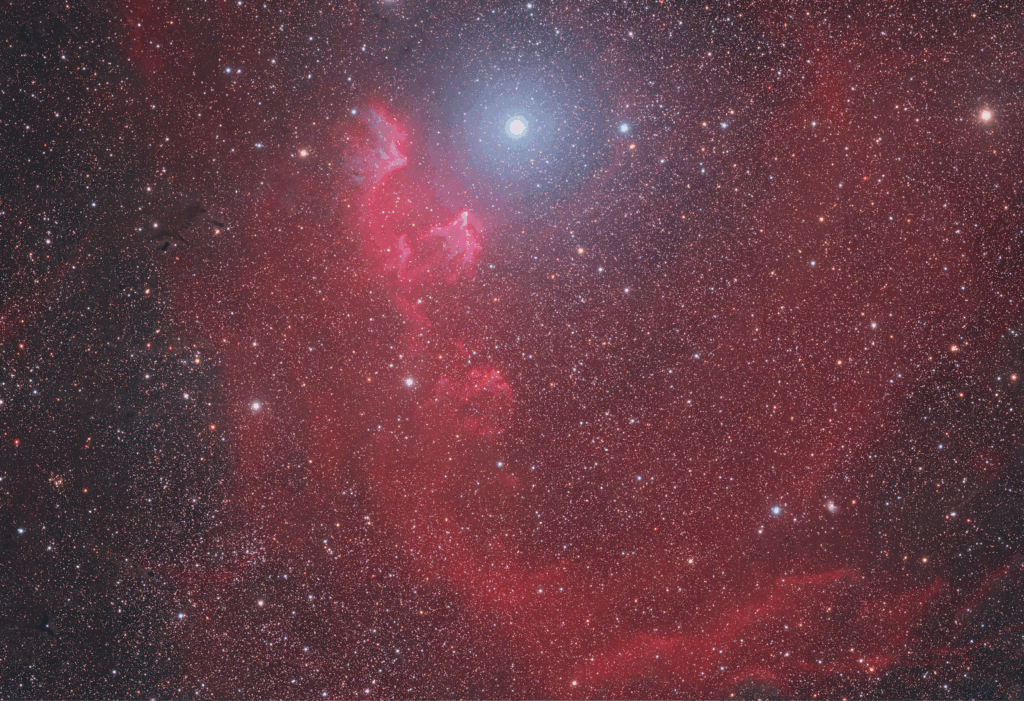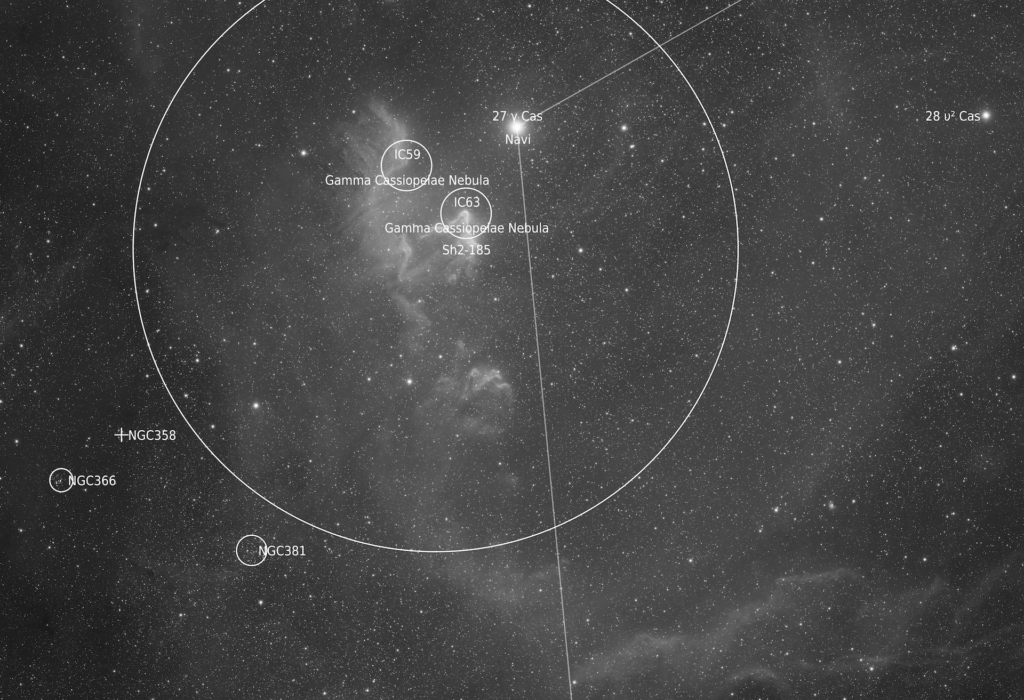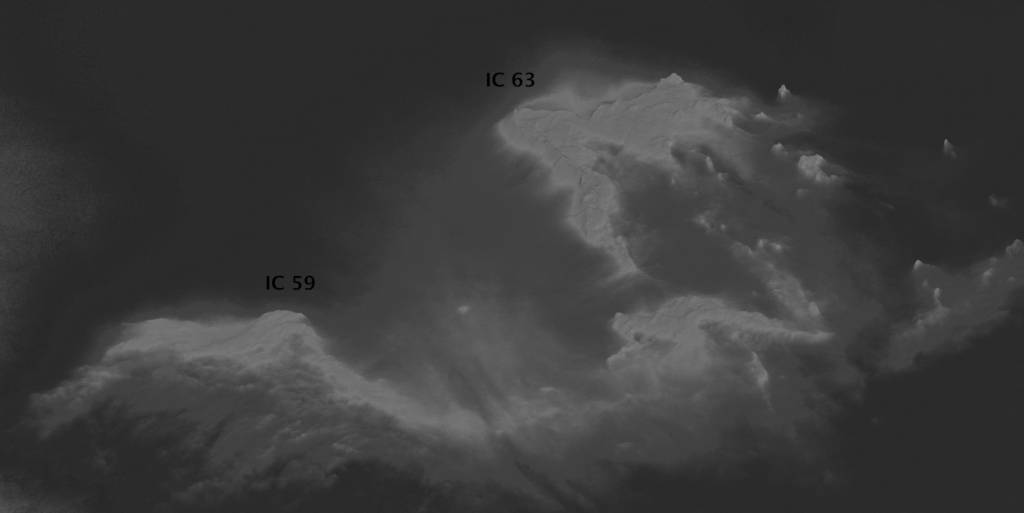The Ghost of Cassiopeia or Sh2-185 is one of the most interesting HII regions in the night sky, but also poses a real challenge to image due to its position. Looking up at the northern sky, the Ghost of Cassiopeia lies centered around the midpoint in the W of Cassiopeia. Typically, astrophotographers label the Ghost of Cassiopeia as IC 63 and IC 59, but these are small pieces of nebulosity within the greater cloud. What makes this HII region so special is that it includes a reflection nebula within; this is the blue-grey dust nestled within the red hydrogen emission. The nebula entirely owes its emission and dynamic structure to the star sitting nearby, Gamma Cas. Intense ultra violet radiation from Gamma Cas ionizes the surrounding hydrogen, causing strong Ha emission. In addition, stray starlight passing through the reflection nebula gives it its white-blue hue, as bluer wavelengths scatter more efficiently through the dust.
As the Greek nomenclature suggests, Gamma Cas is the third brightest star in Cassiopeia, but it turns out to vary in brightness. Gamma Cas is actually a variable star, and a very unusual one at that. Gamma Cas rotates at roughly 1.6 million kph, and this spin rate causes periodic mass ejections, as gas is effectively thrown off the star’s equator, forming a disk of matter called a decretion disk. This disk emits light, causing the observed changes in brightness from around magnitude 1.6 to 3.0 on the timescale of decades. This phenomenon places the star in the eruptive Be star class. To make everything more complex, Gamma Cas is part of a muti-star system that may contain up to 8 stars, including a possible white dwarf.
While Gamma Cas has immense scientific interest, to astrophotographers trying to image the Ghost of Cassiopeia, it poses a problem. A star with a typical apparent magnitude of 2.5 causes reflections within the telescope and optical train. This can cause a multitude of artifacts, from bright, cone-like reflections to large, faint circular zones–especially in the hydrogen data, which is essential for capturing a good image of the region.
The following image represents about 60 hrs of data with a small portion still to come.

This result is a relatively quick attempt at processing while controlling Gamma Cas, emphasizing the faint nebulosity, and removing artifacts. As I continue work on the image, if I discover helpful techniques in PixInsight, I will write a blog detailing the strategy.
An annotated version of the region is shown here.

A contour plot of the IC 63 and IC 59 prominences is shown below.

